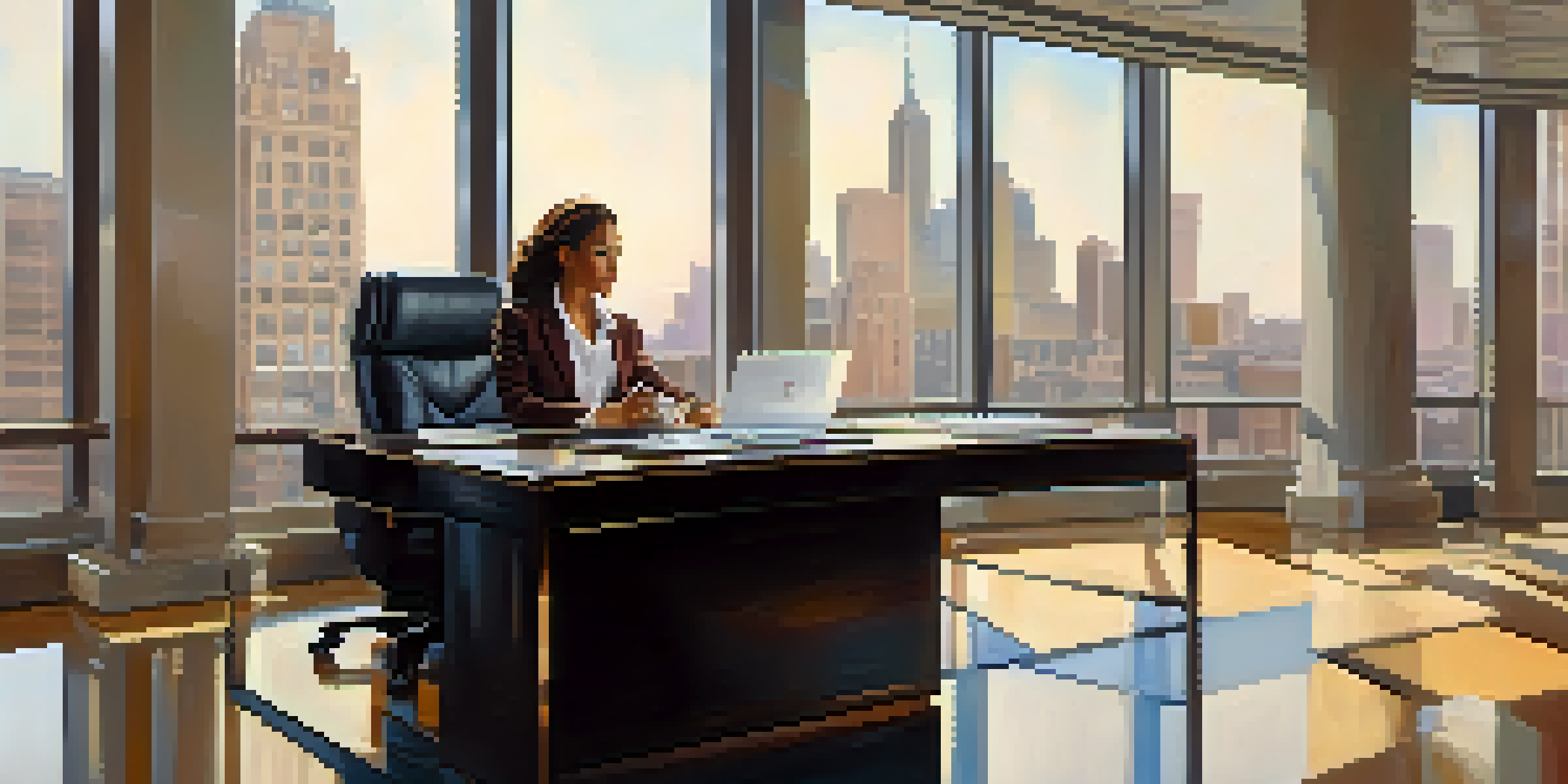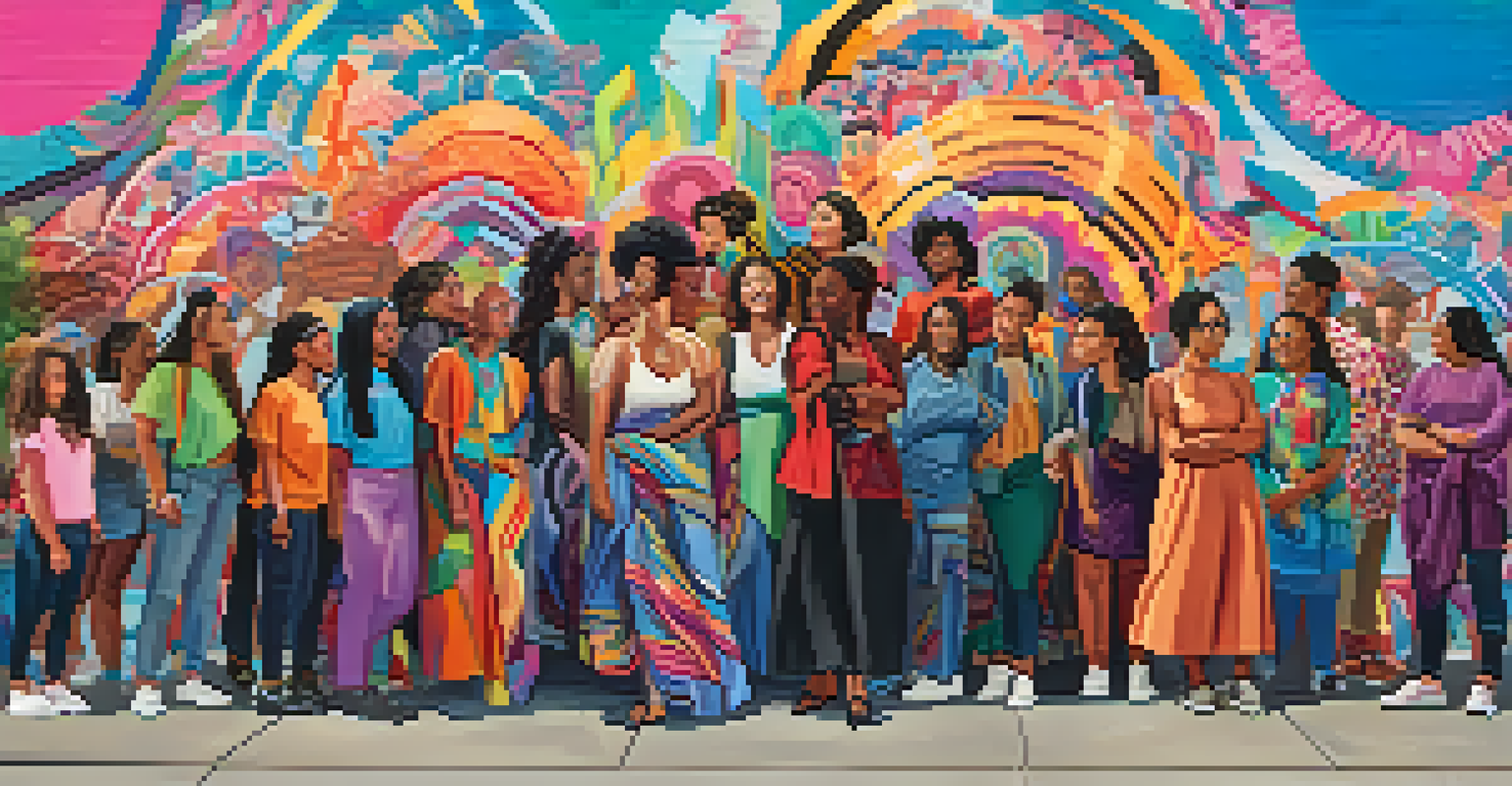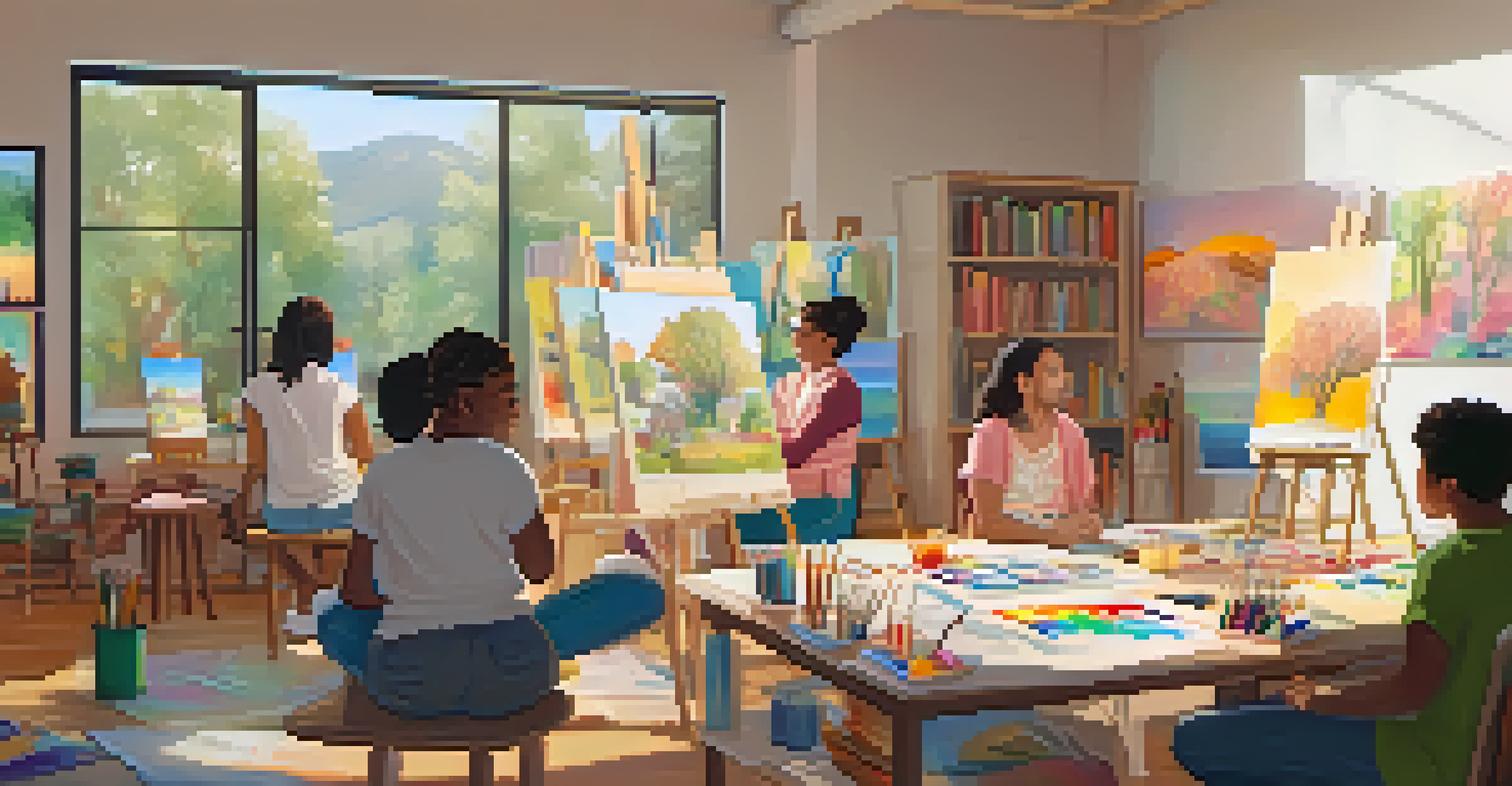The Role of Art in Challenging Gender Norms and Stereotypes

Art as a Mirror Reflecting Society's Gender Norms
Art has always served as a reflection of society, capturing the values and norms of its time. Gender norms, often rigid and prescriptive, can be seen echoed in various art forms, from classical paintings to contemporary digital art. By portraying traditional gender roles, artists highlight societal expectations, making it easier for audiences to recognize and question these norms.
Art is a reflection of society, but it can also be a catalyst for change.
For instance, think about classic portraiture that often depicts men as powerful figures while women are shown in subservient roles. This not only reinforces stereotypes but also shapes how we perceive gender identity. By showcasing these embedded norms, art invites us to engage with and critique them, paving the way for change.
Ultimately, recognizing how art reflects these norms is the first step toward challenging and reshaping them. Artists play a crucial role in bringing these issues to light, encouraging dialogues about gender and identity that might otherwise remain unexamined.
Subverting Gender Stereotypes Through Creative Expression
Many artists intentionally subvert traditional gender roles through their work, creating pieces that challenge stereotypes. For example, artists like Frida Kahlo and Jean-Michel Basquiat have used their art to address complex gender issues, exploring themes of identity, power, and vulnerability. Their works encourage viewers to rethink preconceived notions about masculinity and femininity.

By portraying characters or situations that defy societal expectations, these artists make powerful statements about the fluidity of gender. Consider a piece that depicts a woman in a traditionally male role, such as a CEO or soldier. This not only challenges the viewer's perceptions but also opens up discussions about equality and representation in various fields.
Art Reflects Gender Norms
Art serves as a mirror to society, highlighting and critiquing rigid gender norms through various artistic expressions.
Through these subversions, art acts as a catalyst for social change, inspiring audiences to question the status quo. It empowers individuals to embrace their identities, regardless of societal pressure, fostering a more inclusive understanding of gender.
The Impact of Feminist Art Movements
Feminist art movements have played a pivotal role in challenging gender norms, creating a platform for women artists to express their experiences. These movements emerged in response to the underrepresentation of women in the art world, aiming to highlight their contributions and perspectives. By reclaiming their narratives, these artists have transformed the conversation around gender and art.
The purpose of art is not a rarified, intellectual distillate; it is life, intensified, brilliant, and immediate.
An example is the Guerrilla Girls, an anonymous group of feminist artists who use humor and provocative visuals to address gender inequity in the art world. Their iconic posters challenge institutions to recognize and rectify their biases, making art both a tool for advocacy and a means of raising awareness. This activism encourages broader societal reflection on gender issues.
Through these movements, feminist art has not only changed the landscape of art itself but has also fostered a deeper understanding of gender dynamics. It pushes boundaries, inviting everyone to participate in discussions about equality, representation, and the role of women in society.
Art as a Space for Intersectionality
Intersectionality is a crucial concept in understanding how various identities intersect, particularly in relation to gender. Art provides a unique space for exploring these complex identities, allowing diverse voices to be heard. Artists from various backgrounds highlight how race, class, and sexuality intersect with gender, enriching the conversation around norms and stereotypes.
Consider artists like Zanele Muholi, whose photography captures the experiences of Black LGBTQ+ individuals in South Africa. Their work challenges not just gender norms but also racial stereotypes, showcasing the multifaceted nature of identity. This intersectional approach enables a broader understanding of the challenges faced by marginalized groups.
Feminist Movements Transform Art
Feminist art movements have reshaped the art landscape by empowering women artists and challenging gender inequities.
By incorporating intersectionality into their work, artists foster empathy and understanding among audiences. This encourages a more nuanced dialogue about gender and identity, ultimately leading to a more inclusive society.
Art in Digital Spaces: Redefining Gender Representation
The rise of digital art has transformed how gender is represented and perceived. Platforms like Instagram and TikTok allow artists to share their work with a global audience, breaking down traditional barriers to entry. This democratization of art enables a wider range of voices to challenge gender norms and stereotypes.
For instance, social media has given rise to movements like #MeToo and #GenderIsAWord, where artists use digital platforms to express their experiences and advocate for change. These movements create a sense of community, allowing individuals to connect over shared struggles and triumphs. The immediacy of digital art can amplify messages, reaching audiences who might not engage with traditional forms.
As a result, digital art serves as a powerful tool for redefining gender representation. It empowers creators to challenge stereotypes in innovative ways, fostering a more inclusive dialogue around gender in the modern world.
Art Therapy: Healing Through Expression and Gender Exploration
Art therapy has emerged as a vital tool for healing, particularly for individuals grappling with gender identity issues. By using creative expression, individuals can explore their feelings and experiences in a safe environment. This process not only facilitates personal healing but also challenges societal norms surrounding gender.
For example, trans and non-binary individuals often face discrimination and stigma, which can lead to mental health challenges. Art therapy offers a therapeutic outlet, allowing them to express their identities and confront societal expectations. This exploration can be empowering, helping individuals reclaim their narratives.
Digital Art Redefines Gender
The rise of digital platforms enables artists to challenge gender stereotypes and foster inclusive dialogues on a global scale.
Moreover, art therapy fosters community and connection among participants. Sharing art can create a sense of belonging, reinforcing that individuals are not alone in their experiences. This collective healing can challenge and change perceptions of gender norms over time.
The Future of Art in Gender Discourse
As society continues to evolve, so too does the role of art in challenging gender norms. Emerging artists are increasingly using their platforms to advocate for change, experimenting with new mediums and messages. This evolution reflects a growing awareness of the complexities of gender and the need for inclusive representation.
Looking ahead, we can expect art to play an even more significant role in shaping conversations around gender. With the rise of technology and digital platforms, artists will have new opportunities to engage audiences and spark discussions. This innovation can lead to unique forms of expression that challenge traditional notions of gender.

Ultimately, the future of art in gender discourse is bright. As artists continue to push boundaries and explore new narratives, they will undoubtedly inspire future generations to question, reflect, and redefine gender norms and stereotypes.